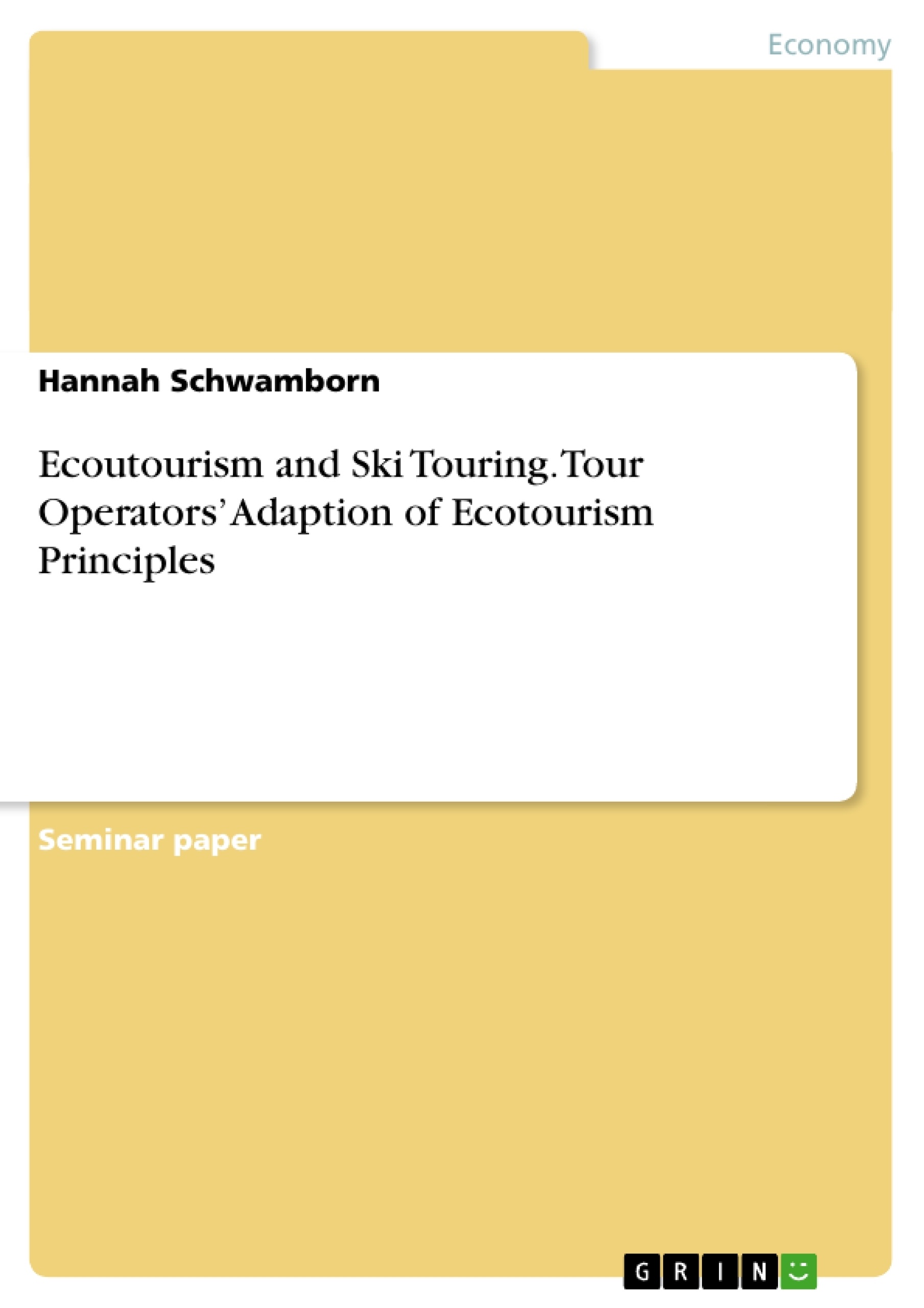Ski touring becomes more and more popular among tourists. Since ski tours pose a threat to the natural environment this paper investigates in how far ecotourim principles are respected by ski touring operators. A survey among Austrian and German tour operators was undertaken to investigate the current adoption of ecotourism principles by the operators.
Table of Contents
1 Introduction
2 Ecotourism
2.1 Definition
2.2 Implications and Guidelines for Tour Operators
3 Ski Touring
3.1 Definition
3.2 Ski Tourers: Characteristics and Motivation
3.3 Impacts
4 Tour Operators’ Adaption of Ecotourism Principles
4.1 Research Design and Procedure
4.2 Analysis and Findings
4.2.1 Understanding and Usage of Ecotourism
4.2.2 Ecological Measures
4.2.3 Socio-Cultural and Economic Measures
4.2.4 Educational Measures
4.2.5 Tourists’ Motivation and Interest
4.2.6 Impact Evaluation
5 Conclusion
6 Appendix
Appendix A: Questionnaire
Appendix B: Questionnaire Results
7 Reference List
-

-

-

-
Upload your own papers! Earn money and win an iPhone X. -

-
Upload your own papers! Earn money and win an iPhone X. -

-
Upload your own papers! Earn money and win an iPhone X. -

-
Upload your own papers! Earn money and win an iPhone X. -

-
Upload your own papers! Earn money and win an iPhone X. -

-
Upload your own papers! Earn money and win an iPhone X. -

-
Upload your own papers! Earn money and win an iPhone X. -

-
Upload your own papers! Earn money and win an iPhone X. -

-
Upload your own papers! Earn money and win an iPhone X. -

-
Upload your own papers! Earn money and win an iPhone X. -

-
Upload your own papers! Earn money and win an iPhone X.

